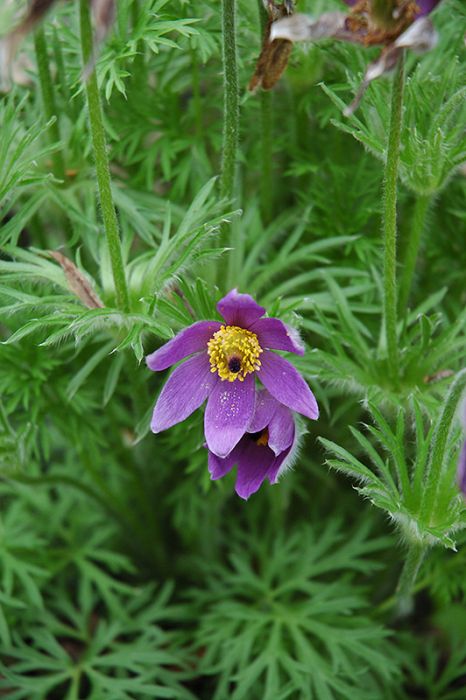Pulsatilla, Pasque Flower


Out of stock
Sold out for the season- Sun Preference
- Full-Sun, Part-Sun
- Bloom or Harvest Time
- April, May
Description
An early spring blooming wildflower, produces large bell shaped blooms followed by feathery seedheads. Well adapted to dry, drought prone soils. May go dormant in the summer.
Minnesota's Largest Selection of Perennials
Discover an unparalleled selection of perennials at Gertens! With the largest variety in Minnesota, we offer endless options of colorful perennials, natives, and pollinator plants to beautify your garden year after year. From vibrant flowers to lush foliage, our perennials are perfect for adding beauty and charm to your outdoor space. Visit Gertens today and see why we're known as Minnesota's Destination Garden Center!
Details
Pasque Flower | Pulsatilla vulgaris
Height: 8 inches
Spacing: 6 inches
Sunlight: full sun to part shade
Hardiness Zone: 4a
Other Names: Prairie Crocus
Brand: Gertens
Description:
Soft, foliage with lavender flowers. Spring bloomer but as the flowers finish, delicate seed heads remain for added interest. Needs well drained soil
Ornamental Features
Pasque Flower has purple cup-shaped flowers with yellow eyes at the ends of the stems from early to mid spring, which are interesting on close inspection. The flowers are excellent for cutting. Its deeply cut ferny compound leaves remain green in color throughout the season. The silver fruits are carried on plumes from early summer to early fall.
Landscape Attributes
Pasque Flower is an herbaceous perennial with a mounded form. It brings an extremely fine and delicate texture to the garden composition and should be used to full effect.
This is a relatively low maintenance plant, and is best cleaned up in early spring before it resumes active growth for the season. Deer don't particularly care for this plant and will usually leave it alone in favor of tastier treats. It has no significant negative characteristics.
Pasque Flower is recommended for the following landscape applications;
- Mass Planting
- Rock/Alpine Gardens
- General Garden Use
Planting & Growing
Pasque Flower will grow to be about 8 inches tall at maturity, with a spread of 8 inches. When grown in masses or used as a bedding plant, individual plants should be spaced approximately 6 inches apart. It grows at a slow rate, and under ideal conditions can be expected to live for approximately 5 years. As an herbaceous perennial, this plant will usually die back to the crown each winter, and will regrow from the base each spring. Be careful not to disturb the crown in late winter when it may not be readily seen!
This plant does best in full sun to partial shade. It is very adaptable to both dry and moist growing conditions, but will not tolerate any standing water. It is considered to be drought-tolerant, and thus makes an ideal choice for a low-water garden or xeriscape application. It is not particular as to soil type or pH. It is somewhat tolerant of urban pollution. Consider covering it with a thick layer of mulch in winter to protect it in exposed locations or colder microclimates. This species is not originally from North America.
More Information
| Common Family Name | Pasque Flower |
|---|---|
| Gerten Grown Plants | Gerten Grown Plants |
| Sun Preference | Full-Sun, Part-Sun |
| Bloom or Harvest Time | April, May |
| Mature Spread (Range) | 12" - 24" |
| Mature Height (Range) | 7-12" |
| USDA Hardiness Zone | 4, 5, 6, 7 |


